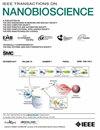用于任意确定性侧向位移设计和测试的机器学习增强型预测建模。
IF 3.7
4区 生物学
Q1 BIOCHEMICAL RESEARCH METHODS
引用次数: 0
摘要
从液体样本中分离细胞和大分子等生物颗粒在临床医学中至关重要,可为液体活检和诊断提供支持。确定性侧向位移(DLD)是微流体技术中按尺寸分拣颗粒的主要方法。然而,DLD 的设计、制造和测试既复杂又耗时。研究人员通常依靠有限元分析来预测粒子轨迹,这对评估 DLD 的性能至关重要。由于制造和实验方面的差异,通过有限元分析预测粒子轨迹的传统方法往往不能准确反映实验结果。为了解决这个问题,我们结合以往的实验数据和先进的建模技术,引入了一种机器学习增强型方法。我们的方法使用了来自 40 个 DLD 芯片的 132 个实验数据集,并将有限元仿真与微流体优化粒子仿真算法 (MOPSA) 和随机森林模型相结合,无需物理测试即可改进轨迹预测和临界尺寸确定。在各种 DLD 芯片上提高模拟的准确性可加快研发速度。我们的模型针对三种 DLD 芯片设计进行了验证,结果表明粒子轨迹预测与实验之间具有很高的相关性,从而简化了临床应用的芯片开发。本文章由计算机程序翻译,如有差异,请以英文原文为准。
Machine Learning-Enhanced Predictive Modeling for Arbitrary Deterministic Lateral Displacement Design and Test
The separation of biological particles like cells and macromolecules from liquid samples is vital in clinical medicine, supporting liquid biopsies and diagnostics. Deterministic Lateral Displacement (DLD) is prominent for sorting particles in microfluidics by size. However, the design, fabrication, and testing of DLDs are complex and time-consuming. Researchers typically rely on finite element analysis to predict particle trajectories, which are crucial in evaluating the performance of DLD. Traditional particle trajectory predictions through finite element analysis often inaccurately reflect experimental results due to manufacturing and experimental variabilities. To address this issue, we introduced a machine learning-enhanced approach, combining past experimental data and advanced modeling techniques. Our method, using a dataset of 132 experiments from 40 DLD chips and integrating finite element simulation with a microfluidic-optimized particle simulation algorithm (MOPSA) and a Random Forest model, improves trajectory prediction and critical size determination without physical tests. This enhanced accuracy in simulation across various DLD chips speeds up development. Our model, validated against three DLD chip designs, showed a high correlation between predicted and experimental particle trajectories, streamlining chip development for clinical applications.
求助全文
通过发布文献求助,成功后即可免费获取论文全文。
去求助
来源期刊

IEEE Transactions on NanoBioscience
工程技术-纳米科技
CiteScore
7.00
自引率
5.10%
发文量
197
审稿时长
>12 weeks
期刊介绍:
The IEEE Transactions on NanoBioscience reports on original, innovative and interdisciplinary work on all aspects of molecular systems, cellular systems, and tissues (including molecular electronics). Topics covered in the journal focus on a broad spectrum of aspects, both on foundations and on applications. Specifically, methods and techniques, experimental aspects, design and implementation, instrumentation and laboratory equipment, clinical aspects, hardware and software data acquisition and analysis and computer based modelling are covered (based on traditional or high performance computing - parallel computers or computer networks).
 求助内容:
求助内容: 应助结果提醒方式:
应助结果提醒方式:


